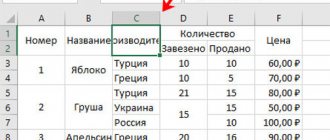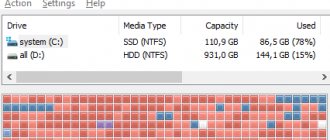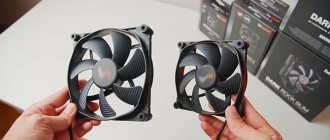Nowadays, every person is a blogger, and then - only more. And now I’m not talking about blogging as a job, but at least as a hobby. If something interesting happens in life, you need to capture it, because otherwise no one will believe it. It is for this niche that the RX100 series from Sony was created.
About the camera
Sony RX100 VII
Sony RX100 VII, as is clear from the last number, is already a family of cameras in this series, which is positioned as the best solution for a blogger. Along the way, avid tourists also fall into this niche.
Sony RX100 VII has a flip-out screen, which is convenient for bloggers
The RX100 VII is, although not cheap, an excellent zoom compact for all occasions.
There is no particular point in listing the specifications; in many ways they are similar to the previous model.
The distance between the connectors on the Sony RX100 VII is quite acceptable
The main differences are the addition of a microphone input, Movie Eye AF, and the removal of the 5-minute 4K recording limit.
Sony RX100 VII gets Movie Eye AF feature
Therefore, the main emphasis is on video. Although the camera’s photo mode is fine.
Visually, it's the same piece of tar soap packed with an incredible amount of stuff, including a pop-up viewfinder, built-in flash and tilt-and-flip screen.
| Elevating viewfinder | Zeiss 24-200mm f/2.8-4.5 lens | Rotating control dial around the lens |
It uses the same 24-200mm f/2.8-4.5 lens as its predecessor. The body is metal and has the same rotating control dial around the lens. Its options can be changed depending on the shooting mode.
Among the shortcomings is the lack of protection from atmospheric influences, as I understand it, for the sake of compactness, so in the rain we carry it in our pocket, quickly remove it and put it back in our pocket.
The camera turns on very quickly, but when turned off things are a little worse.
The Sony RX100 VII has 357 phase detection AF points covering 68% of the frame.
Sony claims "the world's fastest autofocus in the Sony RX100 VII" at 0.02 seconds (versus 0.03 seconds for the RX100 VI). This is great, but somehow for me 0.03 s is really very slow :).
As before, the new product is built on the Bionz X processor with a buffer chip. But now equipped with a new one-inch 20.1-megapixel back-illuminated Exmor CMOS sensor based on Sony Alpha 9 architecture.
With continuous shooting, you can shoot seven JPEG or RAW files at 90 fps in one sitting, or 20 fps with continuous shooting without blackout and AF tracking. Say these numbers to yourself when you look at the price of a camera.
The battery is, as usual, 1240 mAh, which is enough for about 240 shots.
1240 mAh battery, enough for ~240 shots
But “don’t worry, be happy”, Sony has long been powered by Power Bank.
Now let's start the test.
⇡#Autofocus, continuous shooting and buffer
The updated autofocus system is one of the main advantages of the Sonу RX100 VII compared to both its predecessors and modern competitors. Firstly, the number of autofocus points has been increased - 357 phase sensors and 425 contrast points have been used. Secondly, the manufacturer claims a record autofocus speed of 0.02 seconds. And the most interesting thing is that a real-time tracking function has been added. The new compact borrowed this progressive option from older Sony models.
The RX100 VII implements the function of recognizing not only people, but also animals. For it to work, you need to activate shooting with a wide autofocus area. The user himself selects the type of object to be photographed (person/animal) - the camera does not yet know how to switch between them automatically. It is also possible to set the priority of the left or right eye when shooting portraits. The camera successfully detects eyes not only in close-ups, but also at a considerable distance to the subject. In very small plans, the entire face is recognized.
When shooting portraits, the autofocus system performed well, and it really feels like it works no worse than the similar mechanism on the company's interchangeable lens cameras. The Sony RX100 VII instantly detects the eyes both in bright, uniform lighting and in more complex (insufficient, mixed) lighting. If you entrust the selection of the priority eye to automation, the camera does not always select the eye closest to it, sometimes “clinging” to the more illuminated one, but this can be changed using the touch screen by touching the image in the right place. I noticed that when photographing animals close-up, the camera periodically selects not the eyes, but the entire face as the focus area, and in small plans it can find the eyes. Perhaps the mechanism is not yet fully debugged, but this does not particularly affect practical shooting - in most cases, sharpness is in place.
Sonу RX100 VII successfully focuses on the eyes of animals, and the animal does not have to look directly at the camera
Now let's test tracking autofocus: the camera is set to continuous focusing mode + eye focus. We film a man running towards the camera. I managed to take a continuous series of 80 frames when shooting RAW + JPEG at maximum quality, after which the camera began to freeze a little (it continued to shoot, but with long breaks between frames). There is no obvious defect in any frame in the series - by open defect I mean photographs in which the model has completely fallen out of the zone of sharpness and the focus has gone somewhere into the background. Throughout the entire series, the RX100 VII managed to maintain focus on the model, but in some frames the sharpness was slightly lost directly to the eye - this becomes noticeable when carefully viewing the images. Overall, I was very pleased with the result.
| Several shots from different stages of the “run”. The camera did a decent job: in some shots the focus “shifted” a little to the shoulder or hat, but overall the sharpness of the model was maintained throughout the entire series | ||||||
The overall impression of autofocus performance is extremely good. It seems that the manufacturer’s words that the Sonу RX100 VII uses top technologies are not just a marketing ploy. I did not notice any difficulties with focusing, including in low light.
When it comes to burst photography, we can't help but note another innovation on the RX100 VII - the ability to shoot at a fantastic 90 frames per second! True, it is relevant only with a fixed exposure and focus, and only the last 7 frames will be recorded on the memory card.
Autofocus (photo)
As soon as I pressed the shutter button, I felt as if I had released a pit bull, which was simply biting into my face and eyes tenaciously and tightly. This is such a creepy analogy of how well autofocus works.
I won’t continue to sing praises and will say that I was more than pleased with the autofocus performance of the Sony RX100 VII.
The camera is guaranteed to capture the eye at a distance of up to 5 meters, sometimes further.
All sudden movements are perfectly analyzed and caught.
Sony Cyber-shot DSC-RX100: lightweight and powerful
Even when placed next to each other, the Sony Cyber-shot RX100 VI and the previous model look like identical twins: black, less than 300 grams in weight and about the size of two decks of playing cards. In short: perfect for trouser pockets!
Still, there is a huge difference between the designations V and VI. Optical zoom speaks about this most accurately. While the wide-angle lens still starts at 24mm, the tele distance now increases from 70mm to 200mm. The optics of the Sony Cyber-shot RX100 VI are three times more powerful than those of the three previous models and, as a result, allow you to take larger, which means more detailed, pictures of distant scenes. It sounds abstract, so we posted comparative photos in a separate photo gallery.
1 of 12
The question arose about how Sony was able to make the Cyber-shot RX100 VI so compact? The answer has two parts. The first corresponds to the dimensions of the matrix. There is a 1-inch sensor with a resolution of 20 megapixels, which is adopted unchanged from the model with the designation V.
Although the chip is smaller than most system cameras, it is capable of comparable image quality: especially in daylight, photos look amazingly clear, detailed and low-noise, as if they were captured on a much larger sensor.
At higher ISO settings, the images are just as convincing. And although the textures look significantly softer due to noise reduction, that is, slightly blurred, those users who do not view their photos at 100% scale will be pleased with the quality of the photos even at ISO 6400. For a compact camera, especially this size, this is possible recognized as first-class performance.
Sony Cyber-shot DSC-RX100: small buttons seem frivolous for large hands
Dynamic range
In terms of dynamic range, the Sony RX100 VII also showed excellent results. Especially if you take into account the size of the matrix. -2 and +2 stops of exposure shift are easily equalized in post-processing. At -3 stops, sharpness drops noticeably, details are lost and color is distorted. When restoring a frame from +3 stops, color distortion, a drop in sharpness, and more pronounced noise also occur.
At the bottom of the publication, you can download the source code for testing the DD using the link.
Photo quality
Even without post-processing, the Sony RX100 VI shoots excellent JPEGs. If you need to get depth sharpness, I advise you to definitely switch to the RAW format, and only then process the frames in Adobe Lightroom. If you use the device for creative work, then there will be no problems here. Colors are bright and rich, although they lack punch.
A 24-200mm lens is not much for the money. Even the cheaper Nikon P1000 has a range of 24-3000 mm. However, the Sony DSC-RX100 VI is a more versatile camera, with more range than most will need except in some cases.
With a versatile zoom and good depth control, the RX100 VI unleashes creative capabilities not found in other compact cameras. Of course, there are options with universal lenses that you can buy for DSLRs or mirrorless cameras, however, they are large, heavy and expensive.
Here we also have good low-light performance from ISO 125-12800, extending to 80-25600. In tests, the DSC-RX100 VI handles shooting well up to 2000, but then noise and color shifts become noticeable.
You can also shoot at ISO 3200, but you need to hold the camera firmly in one place. Although the noise will be very noticeable, we will get photo quality many times better than that of cameras with small sensors.
However, the f/2.8 aperture and built-in stabilization in the Cyber-shot DSC-RX100 VI allows you to work at high ISOs and get excellent results in many scenarios, even in low light. The pop-up flash will be available when shooting in dark scenes. But I would advise using it as little as possible.
Lens sharpness
A zoom lens with such focal lengths is, of course, convenient, but how does it maintain sharpness across the entire field of the frame?
Sharpness at 24mm focal length
At the minimum focal length, both the central and side parts are clearly readable, but a decrease in sharpness occurs already from a third of the frame on the sides. Not critical, but still there.
Sharpness at 100mm focal length
At a focal length of 100 mm, an interesting picture is observed: the center is sharp, the right edge is also sharp, but the left edge is a little blurred, moreover, than at the shortest focal length.
Sharpness at 200mm focal length
At the maximum focal length, the picture is a little better than at a short distance: the edges are a little less sharp, but again there is an interesting point - a decrease in sharpness in the center at the bottom of the frame, and on the contrary - sharper at the edges.
⇡#JPEG quality
I believe that the JPEG format will be in demand among the majority of Sonу RX100 VII users, and, admittedly, provided there is sufficient lighting, the camera produces a very decent result (we will talk about shooting in the dark in a special section). I will note excellent color rendition with automatic white balance: the camera does not distort the colors, they look exactly as the eye sees them. There is no distortion into too warm or cold shades - in particular, the colors of human skin are reproduced correctly. There is also no feeling of excessive saturation or, on the contrary, too pale shades in the photo, exaggerated or understated contrast - everything is very balanced and harmonious. In this regard, the RX100 VII keeps the bar set by the company’s older cameras, and certainly compares favorably even with top-end smartphones, which tend to “embellish” the picture. For a compact with a small matrix, there is also very decent detail here: when using low ISO values, all textures and nuances are clearly drawn. By shooting at fairly long focal lengths, you can get good bokeh in the frame - not as impressive as with professional fast lenses, but much more natural and beautiful than when using the background blur effect on a smartphone. Below you can see examples of JPEGs directly from the camera.
ISO (photo)
Regarding ISO, you shouldn’t expect miracles, but the result is still decent. Up to a value of 2000 the noise is of little importance, at 3200 it is already noticeable and this value can be considered the limit, then colored spots appear and the clarity of the picture decreases.
| ISO 500 | ISO 1000 |
| ISO 2000 | ISO 3200 |
| ISO 6400 | ISO 12800 |
Sony Cyber-shot DSC-RX100: great for video shooting too
But touch input helps a lot in video mode. While recording in Ultra-HD resolution at up to 30 frames per second, just touch the desired location on the screen with your finger and the Sony Cyber-shot RX100 VI will smoothly change the focus point. This allows you to gain additional rating points, as well as other professional-level video functions: Slog3/S-Gamut3-, as well as HLG profiles for HDR video are on board. There are also HFR slow-motion videos at an impressive 1000 frames per second, which the camera upscales to Full-HD resolution.
Speed is another strong point of the Sony Cyber-shot RX100 VI. Let's start with autofocus: a numerically impressive 315 phase-focus fields that cover almost the entire visible area, focusing extremely quickly even in small amounts of light. Further delight is continuous shooting at approximately 24 frames per second with sharpness tracking, as well as a continuous 240 frames per burst. It is currently difficult to beat such indicators.
Sony Cyber-shot DSC-RX100: around the lens there is a freely programmable ring that can be used, for example, for exposure compensation
But the problem is not with the Sony Cyber-shot RX100 VI itself. After all, the previous model had already achieved such indicators of speed and series duration. The main difference lies in the lens. The high-quality metal body, somewhat frivolous small buttons, and the freely programmable settings ring on the lens remain intact.
Unfortunately, the SD memory card slot only supports UHS-I speed. For this reason, it takes a good minute to process a full series of images. Additionally, the RX100 VI uses an equally small battery that only lasts a few hundred shots. Thus, a spare battery, that is, essentially a power bank that can recharge a Sony camera via the micro-USB connector, is more mandatory than desirable.
Considering all of the above, our conclusion about the Sony Cyber-shot RX100 VI based on the results of practical testing is mixed. Is this a cool camera? Undoubtedly! Even if this model in July, with a price of about 98,000 rubles, turns out to be anything but cheap.
In addition, it will perfectly suit a slightly different target group than the previous model: while the camera with the designation V, due to its wide-angle lens with 24-70 mm, can act as an everyday replacement for a system camera, the Sony Cyber-shot RX100 VI shows its my greatest strengths lie primarily in travel. Accordingly, the buyer’s preferences and the primary area of operation of the camera will be decisive. At the same time, choosing in favor of any model will not be wrong.
Conditional disadvantages of 4K
When stabilization is turned on in 4K, the camera shoots with a slight crop. With stabilization turned off, there is no crop.
And since we’re talking about disadvantages, 4K has one more conditional one - a recording limit of 5 minutes. So blogging in 4K will create some discomfort due to the constant stitching of video fragments. It is conditional if you are not shooting in standard mode. This limitation can be removed, but then be prepared that the camera will heat up and at some point may turn off due to overheating. Especially indoors or when shooting outdoors during the warm season.
What's under the hood?
The Sony RX100 is equipped with a rather large, for its segment, Exmor CMOS matrix measuring one inch (13.2x8.8 mm) and a record resolution for point-and-shoot cameras of 20.2 megapixels. It works in conjunction with a Carl Zeiss Vario-Sonnar T* F1.8-4.9 lens with a focal length of 10.4-37.1 mm (or 28-100 mm in 35 mm equivalent) and the new BIONZ processor. Such solid components are simply obliged to produce images of excellent quality. But is it?
Visual comparison of the Sony RX100 matrix with other sensor sizes
Image quality
Automatic exposure metering and white balance detection systems work quite correctly, on par with professional DSLRs. Color reproduction is close to neutral, and not to Sony's branded one, which we are used to seeing in cameras of the Alpha or NEX series. The dynamic range, of course, is not amazing, but for most shooting situations it is enough, there are no deep gaps between shadows or highlights. If necessary, the DD can be expanded using software or a custom HDR shooting mode can be used.
The Sony RX100 sensor produces images with very high detail at low sensitivity values. At high ISOs, the results vary greatly depending on the format you're shooting in.
In JPEG, digital noise can be noticeable in dark areas of the image even at ISO 125 - it all depends on the specific shooting conditions. The limit for shooting in JPEG is ISO 1000, at which the noise reduction still spares the image, but the picture itself acquires a “slight soapiness” due to the active operation of the noise reduction. But taking into account the high resolution of the sensor, photographs taken at a sensitivity level of ISO 1250-3200 can be used for the web. RAW gives a completely different result. At ISO 1000, 1600, 2500 the picture is nice. There is fine-grained luminance noise, which does not in any way affect the detail or perception of the image. The problems start only after ISO 3200.
RAW 1/30 sec f/6.3 ISO 1000, converted from Lightroom with default settings
1/30 sec f/6.3 ISO 1000, in-camera JPEG. Noise reduction is weak.
RAW 1/30 sec f/6.3 ISO 1000, center of frame at 100% zoom
JPEG 1/30 sec f/6.3 ISO 1000, center of frame at 100% zoom
The Sony RX100 owes its highly detailed photographs not only to the sensor, but also to the Carl Zeiss Vario-Sonnar T 28-100 mm F1.8-4.9 lens (35 mm equivalent). It's sharp and has a convenient range of focal lengths, but you won't be able to get a well-blurred background with it. Chromatic aberrations are also present. True, you won't notice them in most photographs. Autofocus, although contrast, works quite quickly in most cases. For static scenes its speed is always sufficient. If there is dynamics in the frame, you will have to rely only on the dexterity of your hands, and not on the tracking mode, which seems to be there, but when it comes down to it, it turns out to be useless.
By definition, you expect a less worthy result from a point-and-shoot camera, but the Sony RX100 breaks the mold, delighting with highly detailed images at low sensitivity and fairly good images at high ISOs. And in general, in terms of picture quality, the RX100 goes far beyond the scope of point-and-shoot cameras. The only compact that's as good as the Sony is the Canon PowerShot G1X, which competes in a higher segment than the RX100.
Functionality
Sony didn’t do much with the menu and general functionality of the RX100, but simply copied the main points and capabilities from its “older” comrades. Like, for example, the Sony SLT-A99, Sony NEX-6, as well as the out-of-class Sony RX1, reviews of which you can find on our website.
The Sony RX100 has a Panorama Sweep feature that makes capturing panoramas very easy. You just need to select the desired mode using the dial, press the shutter button and turn the camera in the desired direction. The RX100 will do the rest itself. As a result, the user receives images suitable for printing in a resolution of up to 12416×1856 pixels when shooting a horizontal panorama and 5536×2160 pixels when shooting a vertical one. If you want to know how to make a panorama using any other camera, see “Workshop e04. How to shoot panoramas."
As I already mentioned, you can easily create HDR images with the Sony RX100. The camera takes three pictures and combines them into one photo. In the settings, you can specify automatic selection of the exposure bracket or set it manually within the range from 1 to 6 steps in 1-step increments. Everything is simple, but reliable. (If anyone doesn’t know what HDR is, check out the corresponding issue of the “A Minute About Photo” section and a workshop on HDR shooting).
HDR 1/6 sec f/11 ISO 80
For those who like to photograph landscapes, an electronic level is provided. If, when shooting a landscape, a person appears in the frame, the camera can itself focus on his face, and when he smiles, the RX100 will take a picture. You can also register the faces of your friends and relatives in the camera's memory, so that in the future it will know who to photograph first. There are also more than three dozen image styles and effects available to suit every taste.
Traditionally for all Sony cameras, the RX100 stands out for its advanced video shooting capabilities. Judge for yourself: Full HD 50 fps in progressive scan, AVCHD or MP4 recording format; built-in stereo microphone with wind noise suppression, image stabilization, the ability to take photos while recording video, manual control and excellent quality of the video itself. As a result, we have the best compact for video shooting. All the other “soap boxes” weren’t even lying around.
The manufacturer claims that under average shooting conditions the battery is enough for 300-320 shots, but during the entire testing period (several weeks) I used up only 4/5 of the battery capacity. If you shoot often (including video), you can safely count on 4-5 days of reliable work.
Blogging
The camera is positioned as a blogger's tool and I was provided with a handle/remote/tripod in the kit.
The Sony RX100 VII included a handle/remote/tripod
It seems like a convenient gadget, you can simply and without any problems press the video recording button, take a photo, or zoom. But even for my small palm, the length for a comfortable grip turned out to be not enough; the little finger and ring finger sag if you take the handle to quickly press the buttons, but if you just grab it like a monolithic stick without buttons, then it’s fine.
| Can be used as a handle | ...can be used as a mini tripod |
There are complaints about this gadget, or, rather, a proposal to lengthen it by 5 centimeters and also provide it with a built-in power bank, so that it can simultaneously power the camera, and not just control it. This is true given the small battery of the RX100 VII.
Sony Cyber-shot DSC-RX100: hit the road energetically
During practical testing, the Sony Cyber-shot RX100 VI clearly outlined its position: a high-performance and, nevertheless, surprisingly convenient model from a series of compact cameras, which should also be suitable for travel. What is the most important prerequisite for this?
Of course, a universal zoom, and best of all - with an infinitely long focal length. Okay, even the most talented engineers can't fool physics. After all, a larger zoom means a larger camera. But for a line of cameras that must fit in a trouser pocket, this clearly does not apply.
And yet, there is no need to completely abandon this idea. You can bend and bend this line until it is enough. As is the case with the Sony Cyber-shot RX100 VI: while the zoom range has tripled, the body dimensions have become only one millimeter larger in depth.
A miracle of technology? Not really, since such a very compact design has, of course, its downsides. We wanted to find out which ones during practical testing and, at the invitation of the manufacturer, we flew to Venice.
Sony Cyber-shot DSC-RX100: there are almost no differences to be found - with the designation V (left) and designation VI (right)











